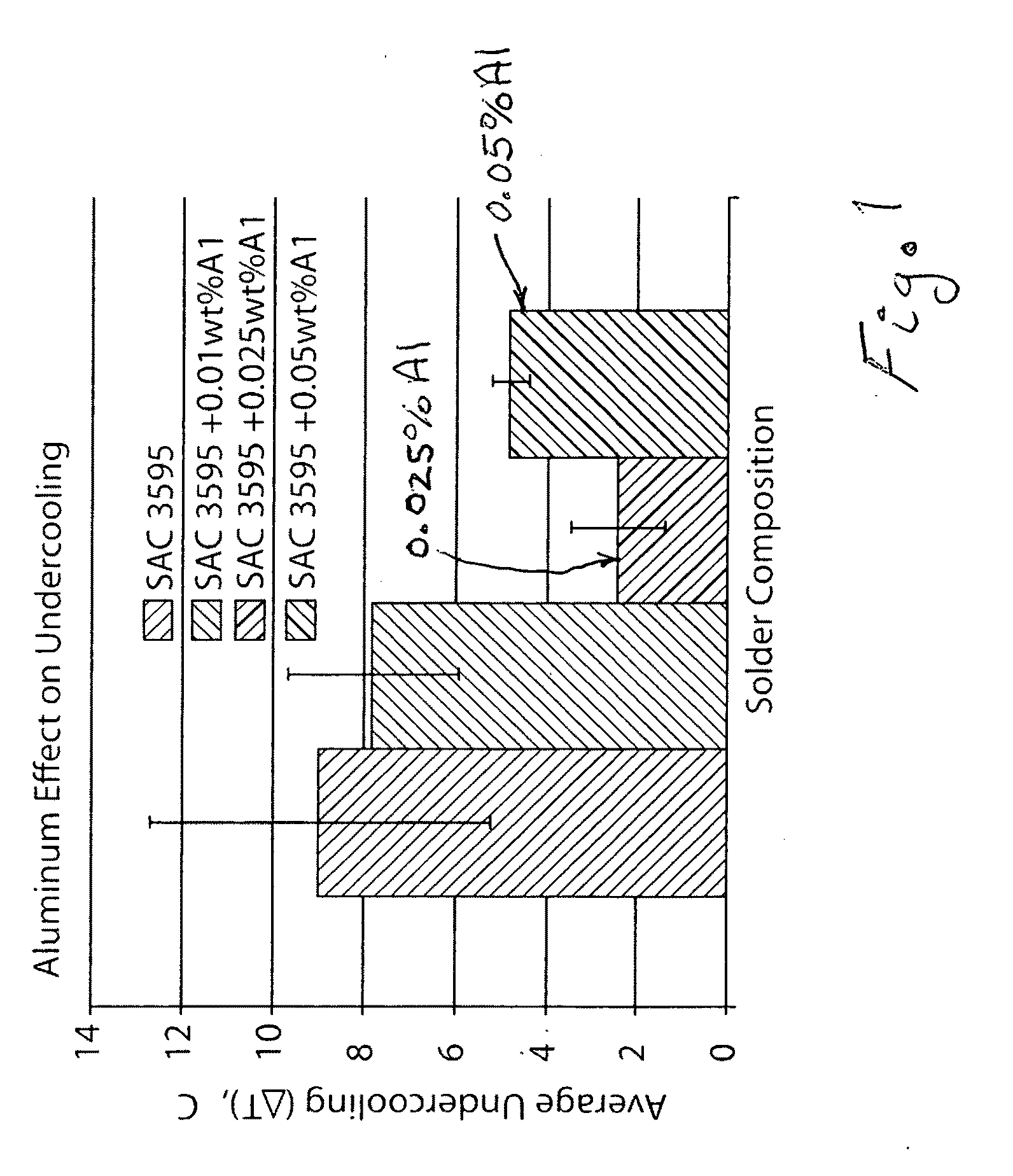Pb-Free Sn-Ag-Cu-Al or Sn-Cu-Al Solder
a technology of sn-ag-cu-al and sn-cu-al, which is applied in the direction of soldering apparatus, manufacturing tools, applications, etc., can solve the problems of high undercooling of sac solder joints, embrittlement of as-solidified solder joints, and difficulty in nucleating sn solidification, so as to improve wettability, reduce melting point, and low melting sn—pb—bi
- Summary
- Abstract
- Description
- Claims
- Application Information
AI Technical Summary
Benefits of technology
Problems solved by technology
Method used
Image
Examples
Embodiment Construction
[0041]The present invention involves reducing the unusually high undercooling of SAC (Sn—Ag—Cu) solder joints described above, where there can be difficulty in nucleating Sn solidification as a pro-eutectic phase, especially during slow cooling, such as existing for ball grid array (BGA) joints. As mentioned above, increased undercooling of the solder joints can promote formation of undesirable pro-eutectic intermetallic phases, specifically Ag3Sn “blades,” that tend to coarsen radically, leading to embrittlement of as-solidified solder joints. To this end, the present invention provides a solder alloy comprising Sn, Ag, Cu, and Al having an alloy composition controlled to provide a strong, impact- and thermal aging-resistant solder joint having beneficial microstructural features described below and substantially devoid of Ag3Sn blades. The solder alloy has a relatively low liquidus temperature and a narrow liquid-solid mushy zone for solderability.
[0042]In an illustrative embodime...
PUM
| Property | Measurement | Unit |
|---|---|---|
| solidus temperature | aaaaa | aaaaa |
| solidus temperature | aaaaa | aaaaa |
| liquidus temperature | aaaaa | aaaaa |
Abstract
Description
Claims
Application Information
 Login to View More
Login to View More - R&D
- Intellectual Property
- Life Sciences
- Materials
- Tech Scout
- Unparalleled Data Quality
- Higher Quality Content
- 60% Fewer Hallucinations
Browse by: Latest US Patents, China's latest patents, Technical Efficacy Thesaurus, Application Domain, Technology Topic, Popular Technical Reports.
© 2025 PatSnap. All rights reserved.Legal|Privacy policy|Modern Slavery Act Transparency Statement|Sitemap|About US| Contact US: help@patsnap.com



